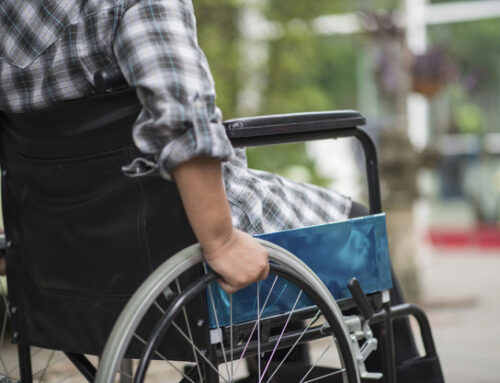Upper Extremity Use in People with Hemiparesis in the First Few Weeks After Stroke
Upper Extremity Use in People with Hemiparesis in the First Few Weeks After Stroke.
Article
Journal of Neurologic Physical Therapy. 31(2):56-63, June 2007.
Lang, Catherine E. PT, PhD; Wagner, Joanne M. PT, PhD, ATC; Edwards, Dorothy F. PhD; Dromerick, Alexander W. MDAbstract:
The purposes of this report were to: 1) determine the amount of upper extremity use in people with hemiparesis post stroke during their inpatient rehabilitation stay, and 2) to examine the relationships between upper extremity use and impairments and activity limitations at this early time point after stroke. We studied 34 subjects with mild-to-moderate acute hemiparesis (mean time since stroke = 9.3 days) and 10 healthy control subjects. Upper extremity use was measured over 24 hours using bilateral wrist accelerometers. Upper extremity impairments and activity limitations were measured using standard clinical techniques and tests. We found that healthy control subjects use their dominant and nondominant upper extremities 8-9 hours per day. Hemiparetic subjects used their affected and unaffected upper extremities substantially less than control subjects, 3.3 and 6.0 hours per day, respectively. Seven of ten impairment level measures and each of the activity level measures were related to affected upper extremity use. The impairment measures that were related to upper extremity use were those measures that assessed the ability to activate muscles (ie active range of motion and force production) and the measurement of shoulder pain. Our data show that affected upper extremity use is minimal during the inpatient rehabilitation stay, especially given that patients in this setting are required to have 3 hours of therapy per day. We speculate that accelerometer measurements of upper extremity use could be used in a variety of settings and that the objective information they provide would be of great value to clinicians as they select treatments and evaluate progress.(C) 2007 Neurology Section, APTA
Copyright © 2007, Lippincott Williams & Wilkins. All rights reserved.
Published by Lippincott Williams & Wilkins.
Copyright/Disclaimer NoticePrivacy Policy
 Â Subscribe to our RSS feedTo obtain full text:
 Subscribe to our RSS feedTo obtain full text:
Upper Extremity Use in People with Hemiparesis in the First Few Weeks After Stroke.
Article
Journal of Neurologic Physical Therapy. 31(2):56-63, June 2007.
Lang, Catherine E. PT, PhD; Wagner, Joanne M. PT, PhD, ATC; Edwards, Dorothy F. PhD; Dromerick, Alexander W. MDAbstract:
The purposes of this report were to: 1) determine the amount of upper extremity use in people with hemiparesis post stroke during their inpatient rehabilitation stay, and 2) to examine the relationships between upper extremity use and impairments and activity limitations at this early time point after stroke. We studied 34 subjects with mild-to-moderate acute hemiparesis (mean time since stroke = 9.3 days) and 10 healthy control subjects. Upper extremity use was measured over 24 hours using bilateral wrist accelerometers. Upper extremity impairments and activity limitations were measured using standard clinical techniques and tests. We found that healthy control subjects use their dominant and nondominant upper extremities 8-9 hours per day. Hemiparetic subjects used their affected and unaffected upper extremities substantially less than control subjects, 3.3 and 6.0 hours per day, respectively. Seven of ten impairment level measures and each of the activity level measures were related to affected upper extremity use. The impairment measures that were related to upper extremity use were those measures that assessed the ability to activate muscles (ie active range of motion and force production) and the measurement of shoulder pain. Our data show that affected upper extremity use is minimal during the inpatient rehabilitation stay, especially given that patients in this setting are required to have 3 hours of therapy per day. We speculate that accelerometer measurements of upper extremity use could be used in a variety of settings and that the objective information they provide would be of great value to clinicians as they select treatments and evaluate progress.(C) 2007 Neurology Section, APTA
Copyright © 2007, Lippincott Williams & Wilkins. All rights reserved.
Published by Lippincott Williams & Wilkins.
Copyright/Disclaimer NoticePrivacy Policy
 Â Subscribe to our RSS feedTo obtain full text:
 Subscribe to our RSS feedTo obtain full text:




